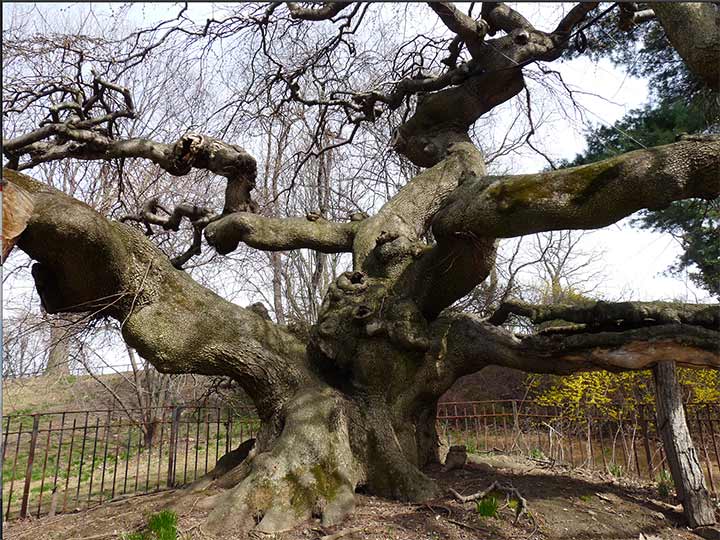
FROM April 2014, when the trees were still bare, comes this photo of the unique Camperdown Elm in Prospect Park, Brooklyn. In the years before moving to Flushing in 1993, I developed a keen interest in Prospect Park, which was strange because, in my youthful peregrinations both with my parents and by myself I really hadn’t thought about the big park that much. I had been on the very rare skating date at Wollman Rink (after falling too often I stopped trying to impress women with skating) or the odd CYO picnic. But in the early 1990s I was drawn to Prospect. I would take the B63 5th Avenue bus to Park Slope, and maybe enter at 3rd or 9th Street on a fall Sunday afternoon, and I’d walk the park instead of watching the Jets drop another one. After a 2 or 3-hour ramble, I would typically exit the park at the Pergola at Ocean and Parkside Avenues … and voila, my chariot awaited…the B16 bus, which ran back to my house in Bay Ridge: as a matter of fact, it deposited me across the street from my apartment house on 6th Avenue.
Just past the Boathouse and Lullwater Bridge, in nearly the center of the park, you will find what appears to be a large shrub surrounded by an iron fence. It’s best photographed in the cold months, when its strange appearance is best seen. The Camperdown Elm is a ground-hugging elm tree derived from a cutting from a creeping Scotch elm at the Camperdown House in Dundee, Scotland in 1872. Until you get a good look at the leaves, in outline and form it rather resembles weeping beech trees found in Flushing and Douglaston. A closer look reveals contorted, twisting branches that turn toward the ground instead of toward the sun. Camperdowns never develop trunks and so must be grafted onto other elms. By the mid-1960s, the tree was in danger of dying but was rescued at the encouragement of Brooklyn poet Marianne Moore, whose tribute to the tree was published in The New Yorker in 1967. Prospect Park is home to many other rare botanical species; Tree Trails in Prospect Park by George Kalmbacher is the definitive guide, and New York City Trees by Edward Sibley Barnard is a more recent one for all of NYC.
As always, “comment…as you see fit.” I earn a small payment when you click on any ad on the site.
10/31/22


2 comments
B16 was my bus line too
There is a resident feral (?) cat living among the hollow branches, who can sometimes be photographed!